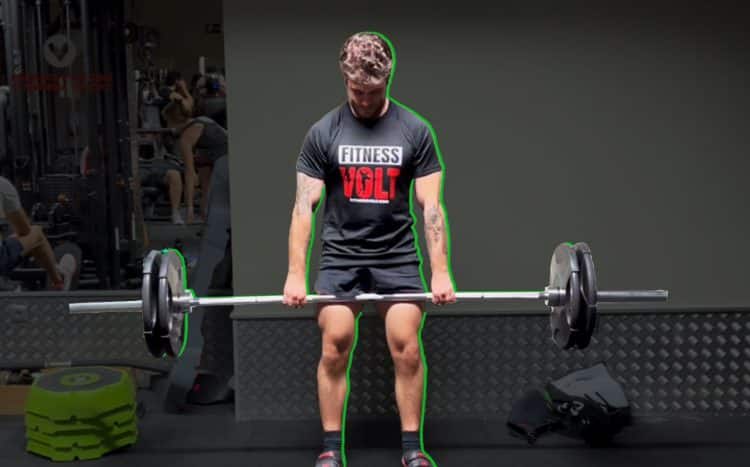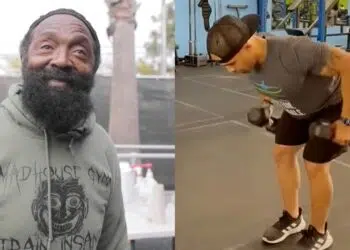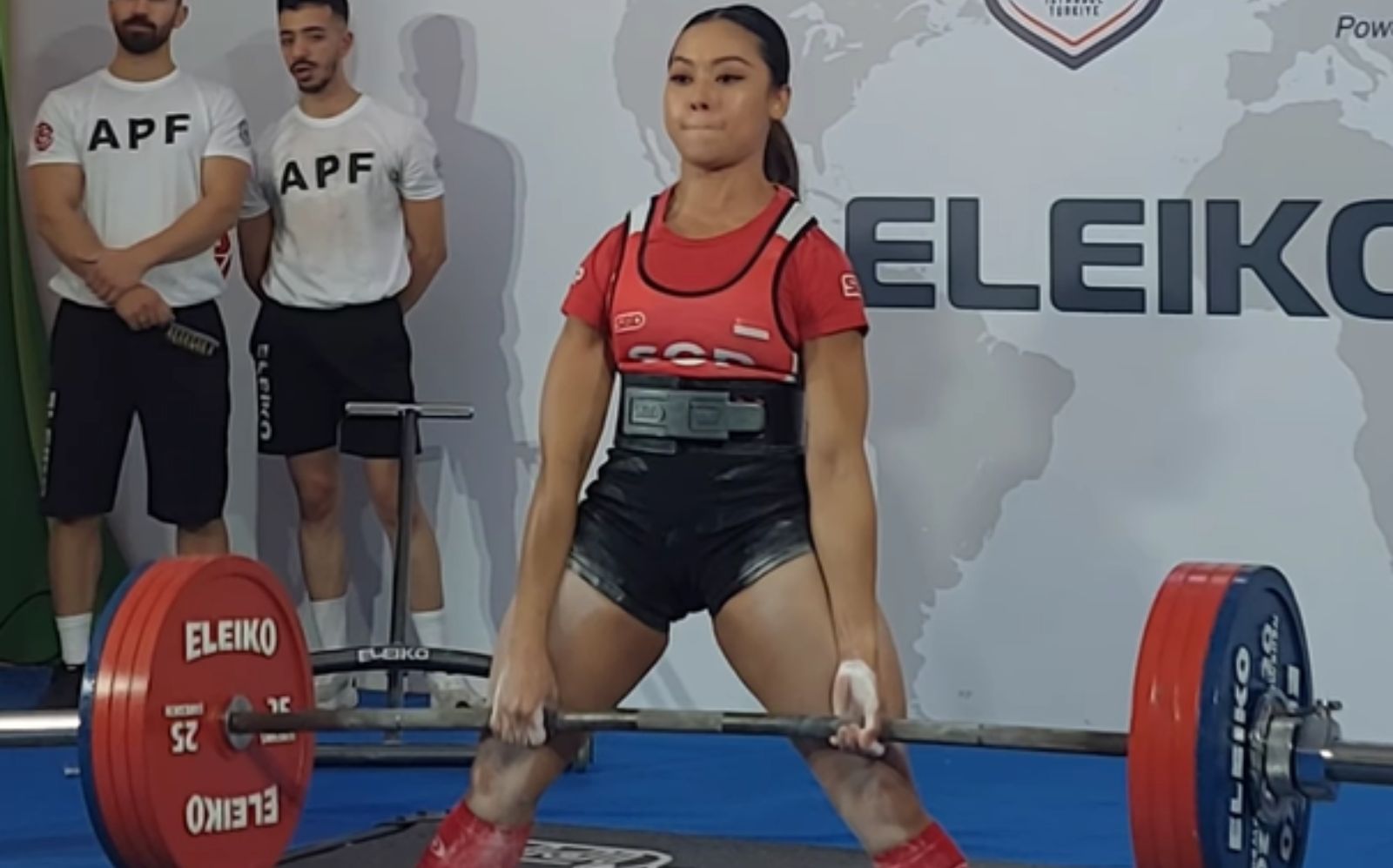Conventional deadlifts are one of the most effective barbell exercises around. Despite their relative simplicity, deadlifts work your entire posterior chain and build functional muscle mass and strength.
In terms of bang for your buck, they’re hard to beat.
As a former powerlifter, I admit that my viewpoint may be slightly biased. However, I’m also a personal trainer with over 30 years of professional experience, and I’ve seen the transformative effect of deadlifts many times.
With all that said, I understand that deadlifts are not everyone’s cup of tea, and there may be times when they’re not the best option. One of my favorite alternatives to conventional deadlifts is the single-leg deadlift. In fact, for some people, this unilateral exercise may even be a better choice.
In this article, I explore the single-leg deadlift and reveal what makes it such a valuable alternative to conventional deadlifts.
Why Do Single-Leg Deadlifts Instead of Conventional Deadlifts
Level Up Your Fitness: Join our 💪 strong community in Fitness Volt Newsletter. Get daily inspiration, expert-backed workouts, nutrition tips, the latest in strength sports, and the support you need to reach your goals. Subscribe for free!
While conventional deadlifts are an excellent exercise for many people, there may be times when single-leg deadlifts are better. Here is a list of reasons for choosing single-leg deadlifts over the conventional version.
Better Balance
Balance is your ability to keep your center of mass over your base of support. Good balance is essential in most sports and also for many of the activities of daily living. Balance is trainable and deteriorates with a lack of use. It also tends to decrease with age, which is one of the reasons that older people are prone to trips and falls.
Unilateral exercises improve balance more than the same movement performed bilaterally (1). In other words, single-leg deadlifts challenge and develop your balance more than conventional deadlifts. Better balance can enhance athletic performance and lower your risk of injuries.
More Stable Hips and Knees
According to electromyography studies, single-leg deadlifts activate the gluteus minimus and medius more than conventional deadlifts (2). These small abductor muscles are vital hip stabilizers.
More stable hips are less prone to collapsing inward when you walk, run, squat, lunge, or jump, which helps take stress off your knees. This is another way in which single-leg deadlifts can help keep you free from injuries.
Identify and Fix Strength Imbalances
While it’s common to have one side stronger than the other, large strength imbalances may have a negative impact on posture and function. Also, having one side more developed than the other could hurt your aesthetics.
Single-leg deadlifts work one side of your body at a time, providing a convenient way to assess and fix any left-to-right strength imbalances.
Less Lower Back Stress
Conventional deadlifts put you in a very strong position to lift heavy weights. While this is good for building brute strength, it also means a lot of work for your lower back. This could be an issue for some exercisers.
Single-leg deadlifts typically involve much lighter loads, making them far more lower back-friendly than the conventional version. As such, this exercise is an excellent option for anyone who wants to deadlift while minimizing lower back stress.
A More Functional Exercise
Many of life’s most physically demanding activities happen one leg at a time. I’m talking about things like walking, running, kicking, jumping, etc. While bilateral exercises such as conventional squats and deadlifts improve unilateral strength, unilateral exercises are generally better for maximizing single-leg athletic performance (3).
So, whether you are a competitive sportsperson or just want to hold your own during the challenges of daily living, the single-leg deadlift will enhance your functional fitness and strength.
Increased Muscle Hypertrophy
Single-leg deadlifts tend to involve a slower eccentric/lowering phase than the conventional version. A longer eccentric has been shown to enhance muscle hypertrophy or growth (4). Therefore, if you want to build more muscular hamstrings and glutes, the single-leg deadlift is an excellent choice and potentially more effective than conventional deadlifts.
A More Accessible Exercise
Conventional deadlifts require a suitable barbell, bumper plates, collars, and maybe a lifting platform. While you’ll probably find these things in most gyms, you may not have what you need at home.
In contrast, you can do single-leg deadlifts with any weight, e.g., a non-standard barbell, dumbbell, or kettlebell. Beginners may even find that they don’t need any weights at all, as bodyweight single-leg deadlifts can be quite challenging.
Consequently, single-leg deadlifts are more accessible than conventional deadlifts, especially for home workouts.
While single-leg deadlifts are a mostly safe, beneficial, and effective exercise, there are also a couple of drawbacks to consider:
Level Up Your Fitness: Join our 💪 strong community in Fitness Volt Newsletter. Get daily inspiration, expert-backed workouts, nutrition tips, the latest in strength sports, and the support you need to reach your goals. Subscribe for free!
Limited Overload
Conventional deadlifts are much better suited to heavy weights than the single-leg variation. Subsequently, while single-leg deadlifts are an effective muscular endurance and hypertrophy exercise, they are less helpful in building brute strength. Strength is best developed by lifting heavy weights for low reps (5).
Balance Can Be a Limiting Factor
While single-leg deadlifts will improve your balance, you also need a decent level of balance to perform them correctly. Exercisers with poor balance may find they cannot do this exercise well enough to experience much benefit.
That said, if your lack of balance proves to be a limiting factor, you can lean on a wall or use your non-weight-bearing leg for support.
How to Do Single-Leg Deadlifts
Now that you have plenty of compelling reasons to do single-leg deadlifts, make sure you get the most from this exercise by doing them correctly! Follow these steps for a safer, more effective workout.
- Stand with your feet together and your arms by your sides.
- Brace your core and pull your shoulders down and back.
- Shift your weight over onto one leg. Bend your supporting knee slightly for balance.
- Hinging from your hips, lean forward and reach down toward the floor. Descend as far as your flexibility allows.
- Simultaneously extend your non-weight-bearing leg out behind you for balance.
- Use your glutes and hamstrings to pull yourself upright and repeat.
- On completion, switch legs and do the same number of reps on the other side.
Pro Tips:
- Avoid rounding your lower back, as doing so increases the stress on your lumbar spine and could cause pain or injury.
- Train your weakest leg first, and match that number of reps on your strong side to fix any strength imbalances.
- Shift your weight back toward your heel to maximize glute and hamstring engagement.
- Do this exercise next to a wall or handrail and hold it for balance if required.
- Make this exercise more challenging by holding a weight in one or both hands:
5 Single-Leg Deadlift Variations
The standard single-leg deadlift is an effective posterior chain exercise. But that doesn’t mean you need to do them the same way all the time. Here are five variations you can use to keep your workouts productive and interesting:
1. Single Leg Deadlift with Reach
There is no denying the effectiveness of single-leg deadlifts. But, if you want to keep making gains, you’ll need to use progressive overload to make workouts gradually more challenging (6). While adding weight works well, this is not the best option for everyone. Instead, you may prefer to progress to a more challenging exercise – like single-leg deadlifts with reach.
How to do it:
- Stand with your feet together and your hands pulled into your hips.
- Brace your core and pull your shoulders down and back.
- Shift your weight over onto one leg. Bend your supporting knee slightly for balance.
- Hinging from your hips, lean forward and extend your arms in front of you. Lean over as far as your flexibility allows.
- Simultaneously lift your non-weight-bearing leg out behind you for balance.
- Use your glutes and hamstrings to pull yourself upright and repeat.
- On completion, switch legs and do the same number of reps on the other side.
2. Prisoner Single-Leg Deadlift
Like the single-leg deadlift with reach, this exercise makes your workout more challenging without using weights. Placing your hands on your head means more load for the target muscles and also makes it harder to balance. This small change will have a major impact on the difficulty of the exercise.
How to do it:
- Stand with your feet together and your hands behind your head. Open your arms and push your elbows back.
- Brace your core and pull your shoulders down and back.
- Shift your weight over onto one leg. Bend your supporting knee slightly for balance.
- Hinging from your hips, lean forward as far as your flexibility allows.
- Simultaneously lift your non-weight-bearing leg out behind you for balance.
- Use your glutes and hamstrings to pull yourself upright and repeat.
- On completion, switch legs and do the same number of reps on the other side.
3. Resistance Band Single-Leg Deadlift
While freeweights, e.g., dumbbells, barbells, and kettlebells, are useful tools for making single-leg deadlifts harder, they are not your only option. Resistance bands can work just as well. Light, portable, and cheap, resistance bands are ideal for home workouts and exercisers who travel.
How to do it:
- Place a resistance band under your right foot. Grab the ends/handles and stand up straight. Brace your core and pull your shoulders down and back.
- Shift your weight over onto your right leg. Bend your supporting knee slightly for balance.
- Hinging from your hips, lean forward as far as your flexibility allows.
- Simultaneously lift your left leg out behind you for balance.
- Use your glutes and hamstrings to pull yourself upright and repeat.
- On completion, switch legs and do the same number of reps on the other side.
4. Cable Single-Leg Deadlift
Dumbbells, barbells, etc., are an effective way to overload your muscles during single-leg deadlifts. However, while there is plenty of resistance at the mid-point of each rep, there is much less when you are standing upright. A cable machine keeps your muscles under tension for longer, providing a potentially more effective workout.
How to do it:
- Attach a suitable handle to a low pulley machine.
- Hold the handle in both hands and take 2-3 steps back to tension the cable.
- Shift your weight over onto one leg. Bend your supporting knee slightly for balance.
- Hinging from your hips, lean forward and extend your arms to the front. Lean as far as your flexibility allows.
- Simultaneously lift your non-weight-bearing leg out behind you for balance.
- Use your glutes and hamstrings to pull yourself upright and repeat.
- On completion, switch legs and do the same number of reps on the other side.
5. B-Stance Single-Leg Deadlift
Do you keep losing your balance during single-leg deadlifts? You are not alone! Using a B or kickstand stance is a great way to increase stability and make this exercise a little less balance-dependent. However, make sure you only use your non-weight-bearing leg for support and not to help you lift the weight.
You can use this technique with any of the other single-leg deadlift variations outlined above, both weighted and bodyweight.
How to do it:
- Stand with your feet together and your arms by your sides. Brace your core and pull your shoulders down and back.
- Shift your weight over onto one leg. Bend your supporting knee slightly for balance.
- Place the ball of your non-weight-bearing foot next to your heel.
- Hinging from your hips, lean forward and reach down toward the floor. Descend as far as your flexibility allows.
- Use your glutes and hamstrings to pull yourself upright and repeat.
- On completion, switch legs and do the same number of reps on the other side.
Conclusion
I am and always will be a massive fan of conventional deadlifts. In my opinion, very few exercises provide as much muscle and strength-building bang for your workout buck.
That said, I also acknowledge that, sometimes, other exercises may be more appropriate.
Single-leg deadlifts are lower back-friendly, require minimal equipment, are better for improving your balance, and can help identify and fix left-to-right strength imbalances. These qualities mean it’s a very valuable exercise and a worthy replacement for the conventional deadlift.
Use the information in this article to master the single-leg deadlift. While it may feel awkward at first, your efforts will be rewarded, and you’ll soon be on your way to developing the muscular, strong, balanced lower body you’ve always wanted.
If you have any questions about single-leg deadlifts or want to explore more topics related to deadlifts, check out our Deadlift Hub for a wealth of information on everything deadlift-related. Feel free to drop me a line in the comments section below, and I’ll be happy to help!
References:
- Zhang W, Chen X, Xu K, Xie H, Li D, Ding S, Sun J. Effect of unilateral training and bilateral training on physical performance: A meta-analysis. Front Physiol. 2023 Apr 13;14:1128250. doi: 10.3389/fphys.2023.1128250. PMID: 37123275; PMCID: PMC10133687.
- Martín-Fuentes I, Oliva-Lozano JM, Muyor JM. Electromyographic activity in deadlift exercise and its variants. A systematic review. PLoS One. 2020 Feb 27;15(2):e0229507. doi: 10.1371/journal.pone.0229507. PMID: 32107499; PMCID: PMC7046193.
- Liao KF, Nassis GP, Bishop C, Yang W, Bian C, Li YM. Effects of unilateral vs. bilateral resistance training interventions on measures of strength, jump, linear and change of direction speed: a systematic review and meta-analysis. Biol Sport. 2022 Sep;39(3):485-497. doi: 10.5114/biolsport.2022.107024. Epub 2021 Jul 3. PMID: 35959319; PMCID: PMC9331349.
- Azevedo PHSM, Oliveira MGD, Schoenfeld BJ. Effect of different eccentric tempos on hypertrophy and strength of the lower limbs. Biol Sport. 2022 Mar;39(2):443-449. doi: 10.5114/biolsport.2022.105335. Epub 2021 Jun 1. PMID: 35309524; PMCID: PMC8919893.
- Schoenfeld BJ, Grgic J, Ogborn D, Krieger JW. Strength and Hypertrophy Adaptations Between Low- vs. High-Load Resistance Training: A Systematic Review and Meta-analysis. J Strength Cond Res. 2017 Dec;31(12):3508-3523. doi: 10.1519/JSC.0000000000002200. PMID: 28834797.
- Peterson MD, Pistilli E, Haff GG, Hoffman EP, Gordon PM. Progression of volume load and muscular adaptation during resistance exercise. Eur J Appl Physiol. 2011 Jun;111(6):1063-71. doi: 10.1007/s00421-010-1735-9. Epub 2010 Nov 27. PMID: 21113614; PMCID: PMC4215195.









